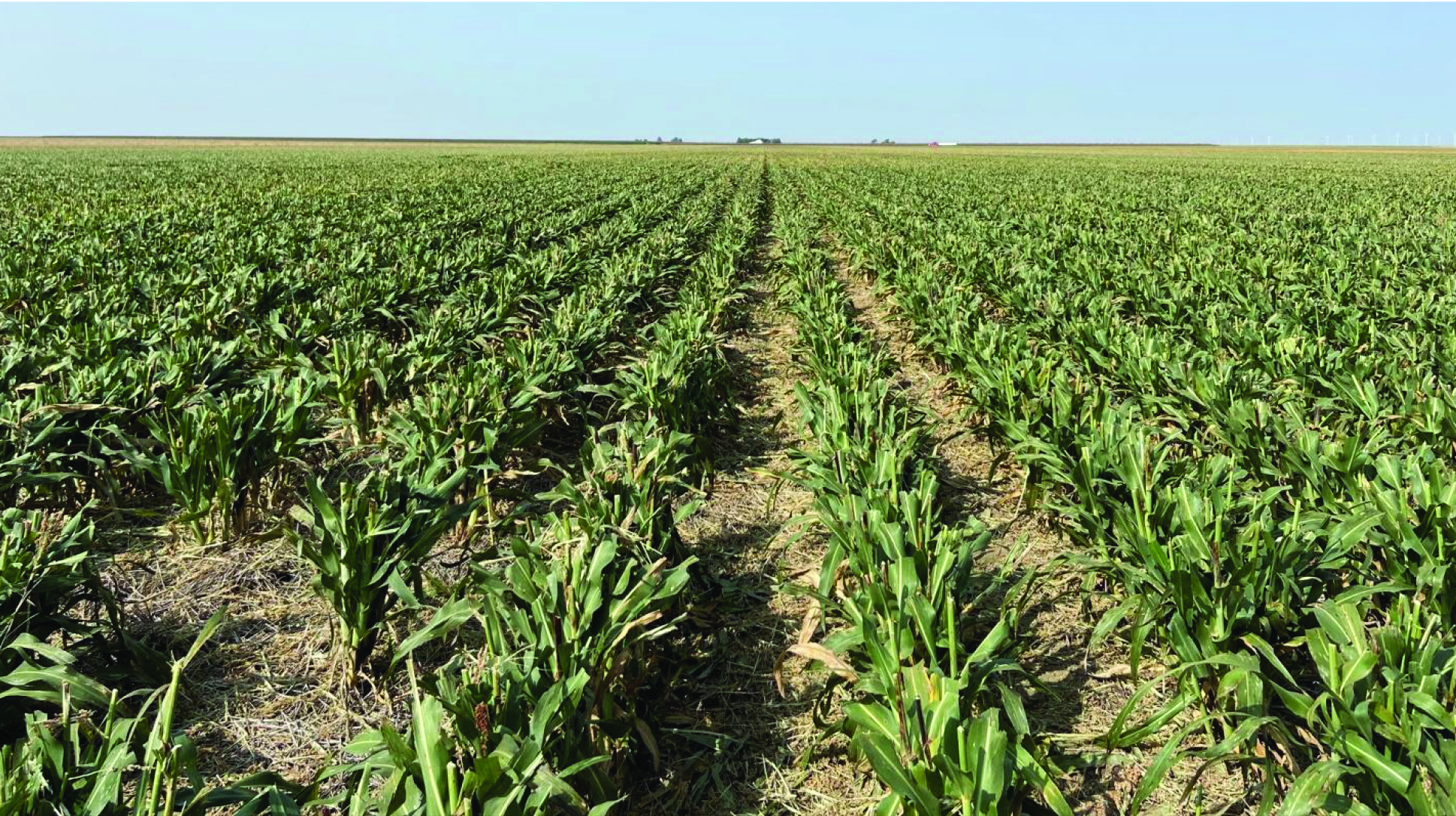Officials from the U.S. Department of Agriculture joined Great Plains Institute and Big River Farms Aug. 25 to announce GPI and Big River Farms’ Solar Farmland Access for Emerging Farmers demonstration projects alongside project partners Connexus Energy and U.S. Solar at the Minnesota State Fair.
Partners in the demonstration project made the announcement in front of an educational exhibit located in the Agriculture Horticulture Building. The pilot project showed ag producers how solar energy development can be increased while preserving productive agricultural land. One panel in the exhibit highlights emerging farmers and the collaboration between Big River Farms, Great Plains Institute, NREL, Connexus Energy, and U.S. Solar. Another panel called attention to how solar farms benefit pollinators and how Minnesota State Fair food favorites depend on pollinators. Minnesota State Fair guests were invited to see the exhibit while visiting the Fair through Sept. 4.
Funded by the Mortenson Family Foundation with support from the National Renewable Energy Lab and Argonne National Lab, these agrivoltaics projects demonstrate safe and scalable operational practices for electric cooperatives and solar site owners to provide farmland access for emerging farmers inside the fence of solar facilities.
In 2022, the Minnesota Department of Agriculture established the nation’s first Emerging Farmers Office, to remove barriers to farming for those new to the profession, such as new Americans or first-generation farmers who lack access to land or capital. Farmland access has been identified by the Emerging Farmers Office as the most common challenge that emerging farmers face.
“With thoughtful planning and procurement, the community benefits of multi-acre solar projects can be numerous,” said Brian Ross, vice president of renewable energy for Great Plains Institute. “It’s important that we are stacking solutions to local food production and access into the clean energy transition.”
Big River Farms, a program of The Food Group, is an incubator farm and host of the annual Emerging Farmers conference, while the mission of Great Plains Institute is to accelerate the transition to net-zero carbon emissions for the benefit of people, the economy, and the environment. Results of the demonstration project will be published by GPI, NREL, and on the AgriSolar Clearinghouse.
Connexus Energy, the Midwest’s largest electric cooperative, has been nationally recognized for its “perfect power” service reliability, grid innovation, and solar land-use practices. Connexus also requires its solar arrays to meet Minnesota’s standard for pollinator-friendly ground cover—in 2018, the cooperative established a commercial apiary in the solar array at its headquarters. This apiary makes honey harvested from the flowering solar arrays that are available for purchase with proceeds benefiting local nonprofits. In 2023, Connexus partnered with Moore Syndication, owners of the ‘Louie the Lightning Bug’ character, to create an activity book that teaches kids, and their adults, about solar facilities.
“U.S. Solar embraces agrivoltaics and low-impact solar design, development, and management principles across all of its projects—whether through pollinator friendly habitat, beekeeping, grazing sheep, or horticultural partnerships,” said Peter Schmitt, director of project development at U.S. Solar. “This type of dual use of the land helps us foster deeper relationships with farmers and local community members, while providing agricultural, environmental, and development benefits.”
Since its founding, U.S. Solar has created more than a square mile of privately financed pollinator habitat in Minnesota. It has also partnered with local, regional, and national organizations to pilot innovative agrivoltaic approaches and support research leading to the development of replicable best practices as agrivoltaics continues to grow in the solar industry.
“As part of the InSPIRE study network of sites, the National Renewable Energy Lab will discover and document the safe and scalable practices and processes that can enable farmland access to solar sites by emerging farmers,” said Jordan Macknick, lead energy-water-land analyst for NREL. “Utilities and solar site operators trust and utilize NREL’s research to make decisions that are best for their organizations.” NREL’s InSPIRE study is the nation’s largest and longest-running study of solar farm design and management practices that provide dual uses for agriculture and co-benefits for ecosystems.
Funding deadline for electric cooperatives
In addition to the demonstration project, speakers highlighted a new federal grant program called Empowering Rural America, or New ERA. New ERA is part of the Inflation Reduction Act, which was passed into law in 2022. The USDA says its New ERA program is “the largest investment in electric cooperatives since the Rural Electrification Act of 1936” and was created with the purpose of helping rural electric cooperatives fund clean energy, energy storage, and transmission projects. As many have pointed out, the energy transition will require a large expansion of the energy grid. Cooperatives across the country have until Sept. 15 to request funding through New ERA.
“USDA’s long-time commitment to renewable and cleaner energy is enhanced even further through the New Empowering Rural America program,” USDA’s Rural Development State Director for Minnesota Colleen Landkamer said. “Investments made under this program will provide rural communities with an affordable and reliable power grid, while supporting new job opportunities and helping to lower energy costs in the future.”
David Murray can be reached at [email protected].




